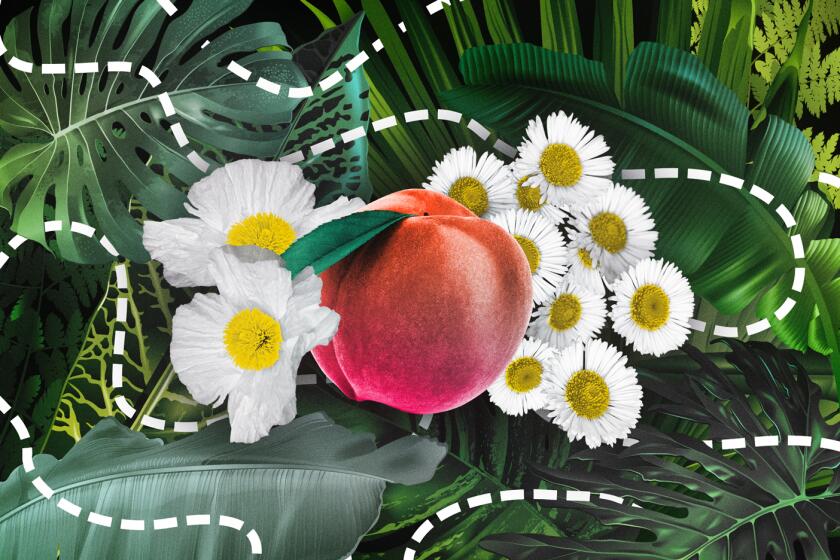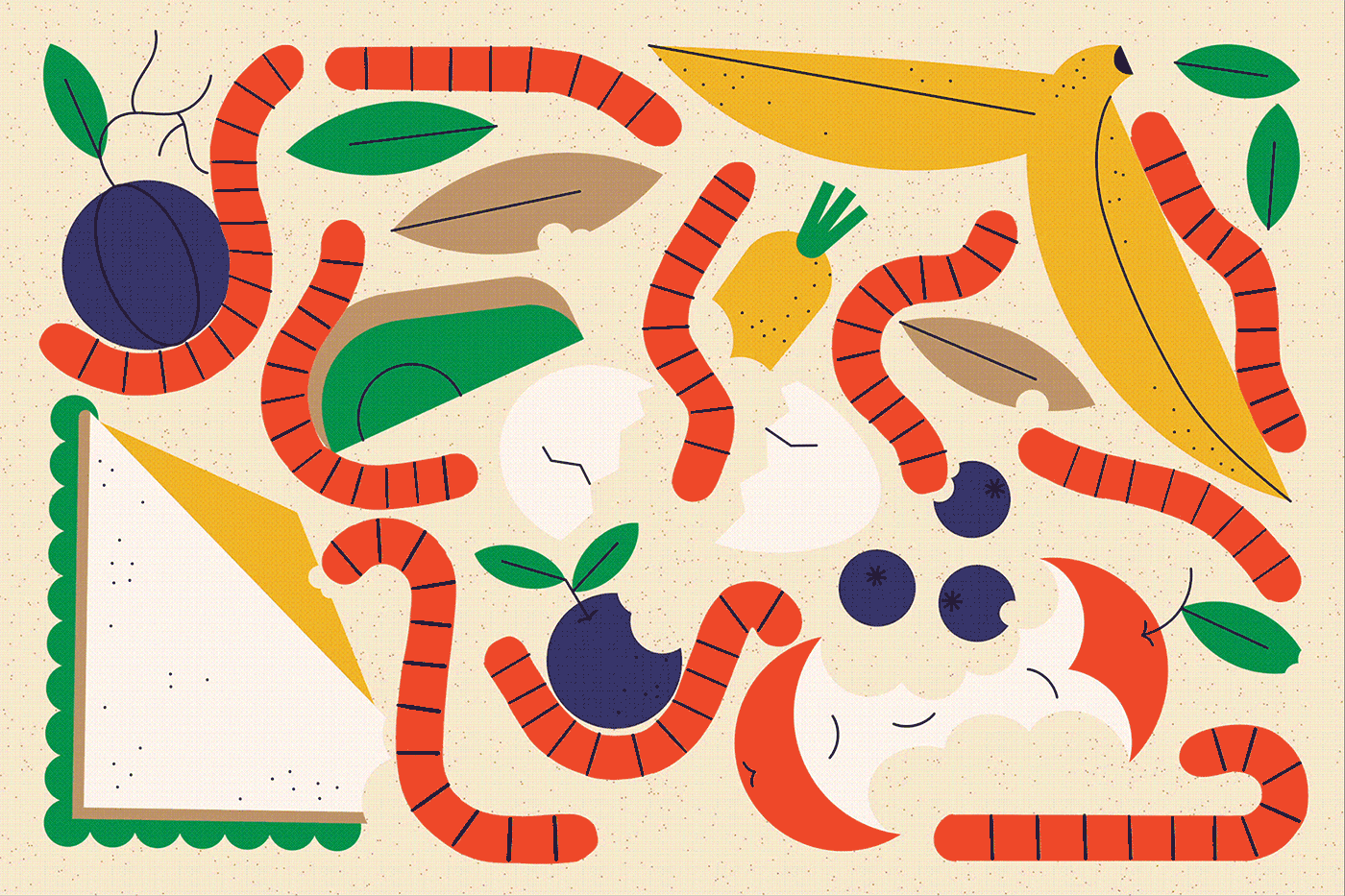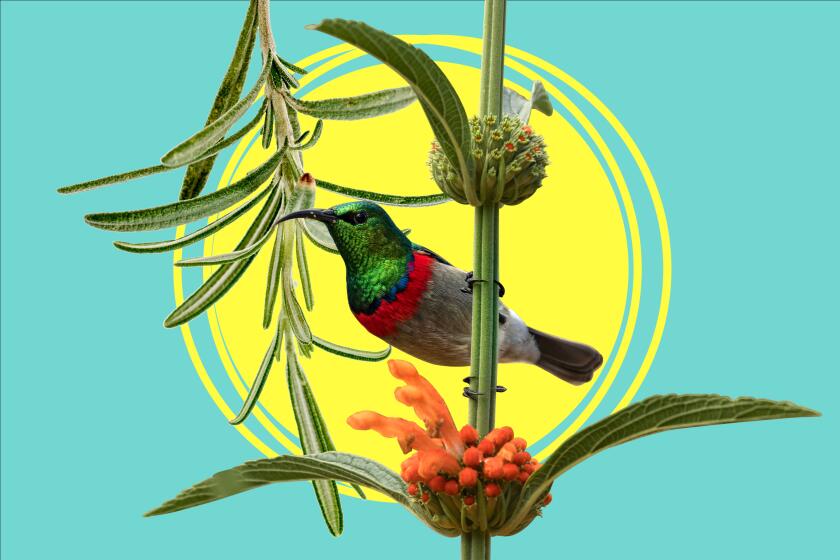Poachers are wiping out SoCal’s wild white sage to make smudge sticks. You can stop them
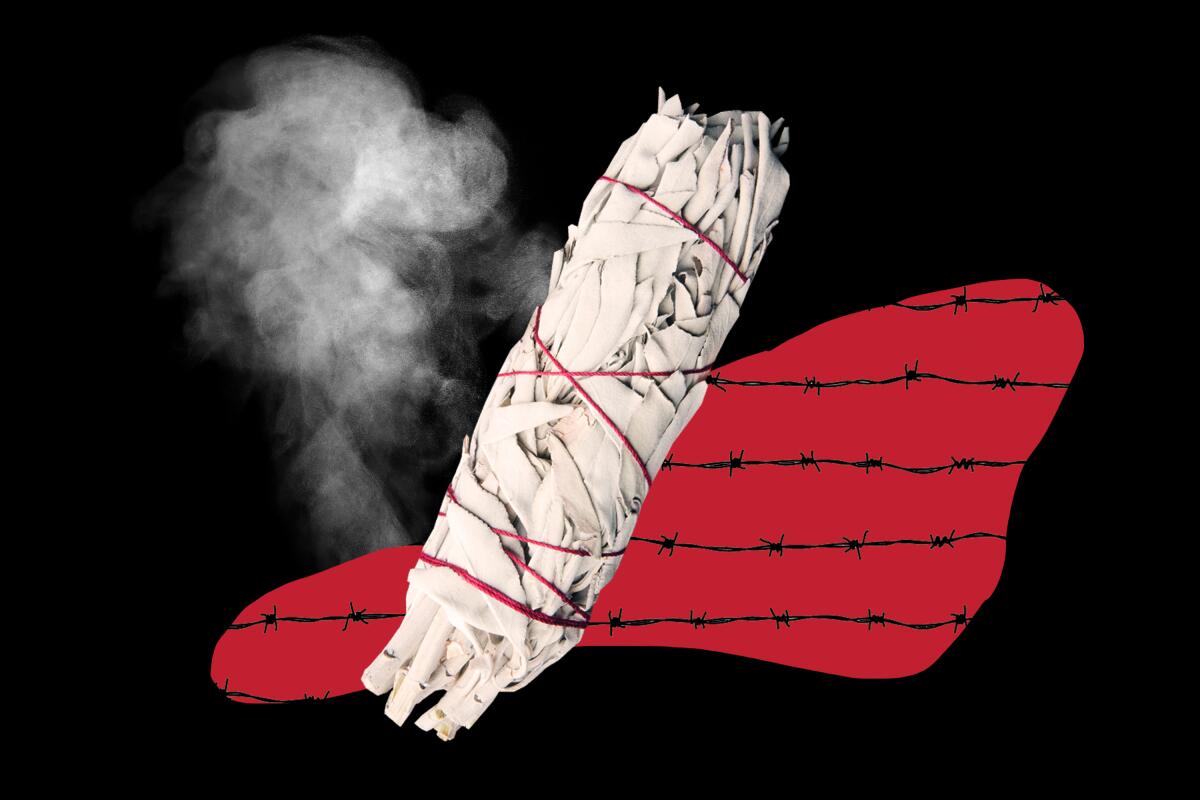
- Share via
White sage has something in common with millions of humans: Tragically — at least for the sage — we all want land in Southern California.
The tall, silvery Salvia apiana is native only to Southern California and northern Baja, a habitat that is increasingly shrinking in the face of housing developments, shopping centers, warehouses and highways.
But over the last decade, there’s been another growing threat to the remaining wild stands of white sage from the kind of people who probably consider themselves allies of the natural world and likely have no idea that their actions are endangering the plant they revere.
Sage stick smudgers.

Subscribers get exclusive access to this story
We’re offering L.A. Times subscribers special access to our best journalism. Thank you for your support.
Explore more Subscriber Exclusive content.
You’ve seen them on social media, television and film: actors, influencers and celebrities waving thick, smoldering bundles of dried white sage leaves to smudge away negative energy or evil spirits, or just purify the air. And over the last five years, the mania for white sage has become a global phenomenon, with websites all over the world selling fat bundles of dried sage for purification or cleansing.
The problem is most people aren’t asking where those sage sticks are coming from, said Teresa Romero, environmental director of the Santa Ynez Band of Chumash, which operates a small nursery that grows sage and other native plants for Chumash community members.
“There’s all kinds of areas where white sage was growing [in nature] that have now been decimated because the people who are taking it aren’t doing it correctly, or at the wrong time of the year, so the plants aren’t thriving,” Romero said.
Finding your favorite nursery can be thrilling. Here are our picks for the best independently owned plant nurseries near Los Angeles.
The Indigenous people of northern Baja and Southern California have long harvested white sage for many purposes, from shampoos and medicinal treatments — sage is believed to have antifungal and antibacterial properties — to calming teas, said Rose Ramirez, co-author with Deborah Small of the “Ethnobotany Project: Contemporary Uses of Native Plants/Southern California and Northern Baja California Indians.” White sage also has been used for ceremonial purposes that include smudging, Ramirez said, but it’s just one of several native plants used for spiritual reasons.
Smudging’s rise, and how it became intertwined with wild white sage
Smudging itself is something done by many cultures, using several types of plants that typically are native to their particular region, Ramirez said. During the Middle Ages, for instance, Europeans burned bundles of rosemary in their homes and even stuffed it in their noses to ward off the Black Death, a.k.a. bubonic plague. But for reasons that aren’t clear, the global smudging craze has fixated on white sage as the plant to use for purification.
It’s bad enough that smudgers are appropriating and trivializing the traditions of Chumash, Tongva and other Southern California Indigenous peoples, Romero said, but what’s really distressing is that, in the process, they are unwittingly helping to destroy the few remaining stands of white sage growing in their Southland native habitat.
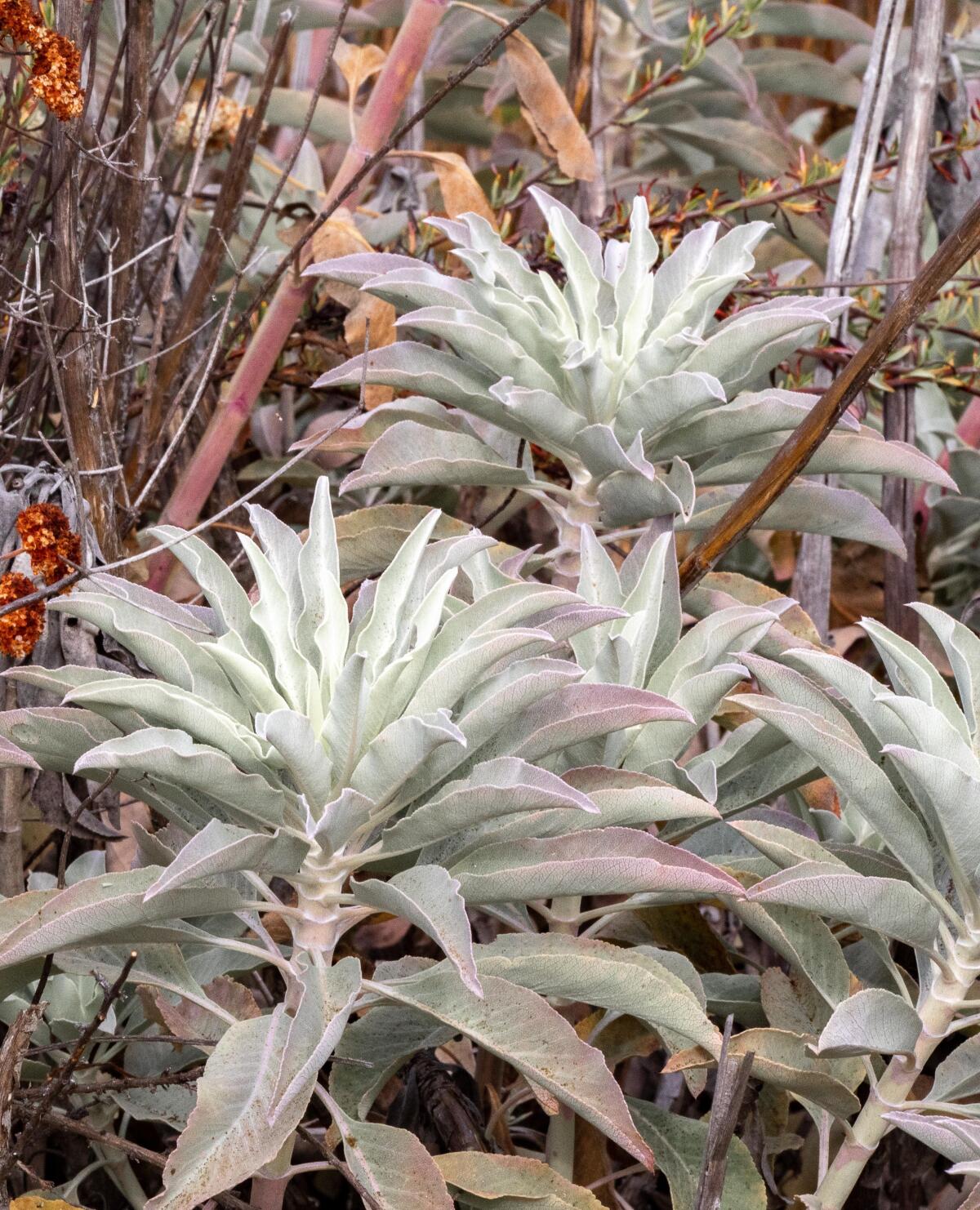
“We need education, because this is really important,” Romero said, “but it feels to me like the problem is larger than I can probably grasp, because it’s not localized anymore, it’s global. So how do we get this message out to countries around the world?”
The California Native Plant Society is hoping its new initiative and documentary called “Saging the World” will help spread the word, said David Bryant, the society’s campaigns and engagement manager. The native plant society partnered with Ramirez and Small to produce the film, which is premiering at the Warner Grand Theatre in San Pedro on Earth Day, April 22.
“Some of these users are really big celebrities who support environmental causes all over the world. They need to know there are conservation issues in their Malibu backyard,” Bryant said. “White sage stands are being decimated in Hollywood’s backyard — literally right in the shadow of the Hollywood sign — and it’s time they pay attention to that.”
White sage stands are being decimated in Hollywood’s backyard — literally right in the shadow of the Hollywood sign.
— David Bryant, California Native Plant Society
Ellen Woodward Taylor, co-owner of Sage Winds Farm, knows about the global demand for white sage firsthand. She sold tie-dye clothing and sage bundles at craft fairs when she and husband Ken Taylor bought 40 acres of land in Jacumba Hot Springs in the southeast corner of San Diego County in 1999. She thought the location was perfect for growing white sage, and they started the farm from seeds she gathered from plants on the property. There were some early challenges when a flash flood devastated her first crop, but by 2005 they had an organic certification and a brisk online business selling white sage leaves, oils and even a body butter she uses liberally herself, especially on her feet.
Today, Sage Wind Farms sells all over the world, she said. “Our largest customer is in Japan. They used to buy 10 ounces a month, now they buy 10 pounds. We ship to Canada, England, even Mongolia. ... There’s a demand for it, and it only grows well in certain areas. And we have so many competitors ... but they’re not farming it. They’re getting it for free from public lands, but if they keep picking it, they’ll totally deplete it, and we won’t have any more wild sage.”
When wild white sage poaching got out of control
Ron Goodman, a San Bernardino County public service employee who patrols the 1,200-acre North Etiwanda Preserve outside Rancho Cucamonga, said white sage poaching has increased dramatically since he took the job eight years ago. The North Etiwanda Preserve was created in 1998 in response to the building of the 210 Freeway. It’s meant to protect the plants and animals in the unique alluvial fan sage scrublands, where white sage is a keystone plant, critical for the survival of other species.
Worm composting, or vermicomposting, turns food waste into worm castings that are great for garden soil. Here’s how to start worm composting at home.
When Goodman started back in 2014, the poaching was “just every now and then,” he said. At the time, “They came with 55-gallon garbage cans and would dump the sage into the back of pickups.”
But over the last two to four years, the poaching has gotten more sophisticated and frequent, he said. These days it’s harder to get vehicles into the preserve, so the poachers hike in with huge duffel bags, cut off the tops of the sage plants and stuff their bags full.
“The duffel bags have shoulder straps, and it’s easier to carry them because the terrain is so difficult,” Goodman said. “And this is hard work. ... The bags we’ve confiscated weigh 70 to 100 pounds each.”
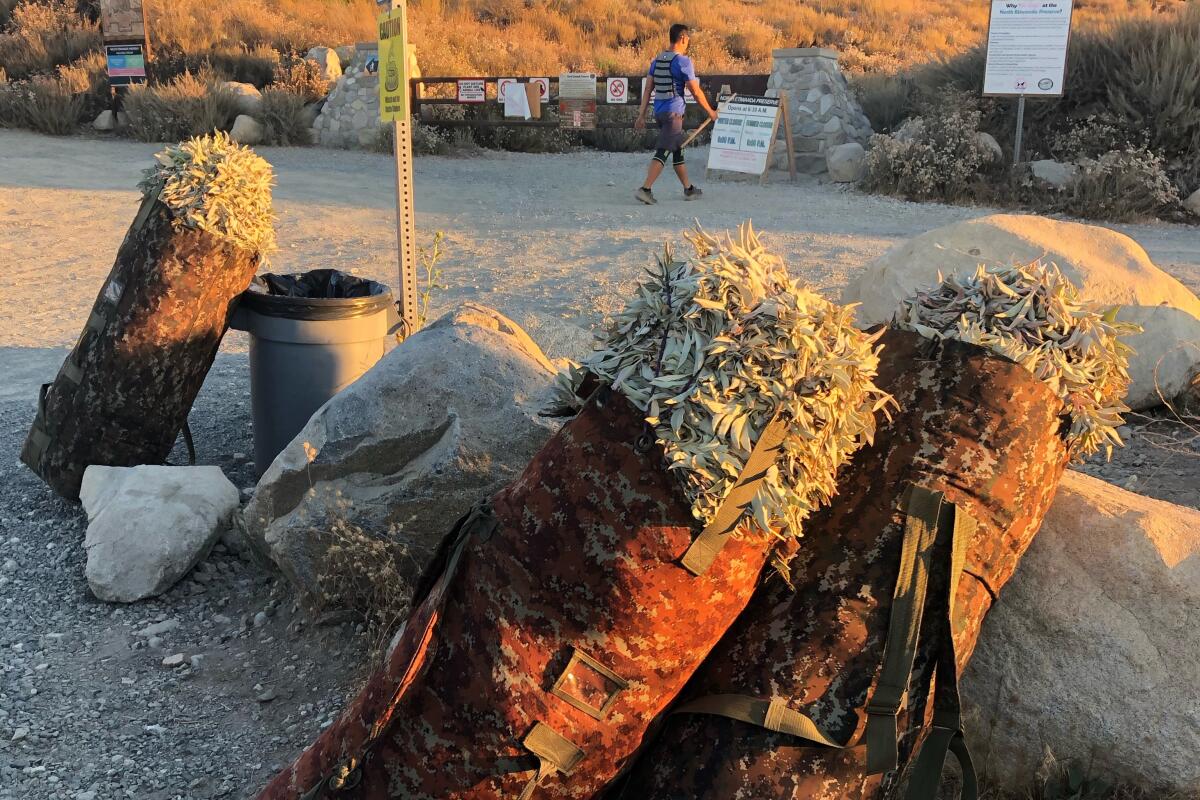
Goodman believes the poachers enter the preserve weekly, especially this time of year when the sage leaves are large and the plants are preparing to bloom. “They come in on foot and then get picked up by a vehicle when they carry the sage out,” he said. “I’ve been told by some individuals that they call an Uber when they walk out of the preserve.”
Catching them is a “cat-and-mouse game because the preserve is so large, and there are many places to hide,” Goodman said. But community members help by reporting people they see walking off the trails, and deputies have a better idea of the spots where poachers like to walk in and out. “We have regular early-morning walkers who don’t hesitate to call if they see poachers with their headlamps and bags. We arrested three [for felony larceny] just last week and confiscated 195 pounds of sage.”
The price of wild white sage
Wholesale prices for sage are around $30 a pound, according to farmer Woodward Taylor, but Goodman said he’s seen wholesale prices as high as $60 a pound. “I’ve been told the retail value can be as high as $120 a pound,” Goodman said. But the poachers walking in the dark, carrying heavy bags through rugged, rattlesnake-filled terrain, and facing arrest, aren’t the people making the money, he said.
“They’re just being exploited for their labor,” Goodman said. “A lot of them don’t speak English, and some of them don’t have any idea that what they’re doing is illegal. But they never give up any information about who is hiring them. It’s really sad.”
What’s really troubling, Ramirez said, is that plants stuffed in duffel bags and left in warehouses develop mold or fungus on the leaves, a distasteful thought for people looking to use white sage for medicinal reasons.
Respect the plant, and 5 more ways to save wild white sage
If they are truly intent on honoring Indigenous ceremonial traditions, Romero said, they shouldn’t expect to get good vibes from a plant that has been treated with such disrespect. That’s why her community encourages people to grow their own sage.
“You need to have a relationship with your plants, tend to them, instead of just overharvesting something you know nothing about and selling it without permission,” she said. “They’re just taking — the plant doesn’t have any choice, and that is colonization at its best. ... Don’t buy from somebody if you don’t know their source.”
By offering free white sage plants to the first 700 people to arrive at the “Saging the World” premiere, the filmmakers hope to encourage people to grow their own, and tell others to do the same. “We’d really like to put a big dent in the illegal trade because if we have enough growers, the poachers won’t have a market anymore,” Ramirez said. “And we can preserve those stands of white sage we hope are still out there for future generations.”
"Saging the World" premiere
The premiere will feature a panel discussion by the film’s creators, who will also answer questions from the audience. And attendees will get a free white sage plant to take home — at least the first 700.
Bryant has another hope too: “I would love it if all celebrities who used it would go back on their platforms and say, ‘I have a PSA about white sage: Boycott wild-harvested products, and grow your own.”
Here’s what you can do to stop the plunder, according to Bryant, Ramirez, Romero and Small:
1. Check the source
Some suppliers and buyers think it gives their white sage a special cachet to say it was harvested from the wild. Others are just vague, claiming it was harvested “sustainably,” said Bryant. Bottom line: If your supplier can’t tell you exactly who grew the sage and where it was grown, stop buying their product and boycott that supplier.
2. Buy from white sage farmers
Their numbers are few but growing, said Romero. In addition to Sage Wind Farms, Mountain Rose Herbs, based in Eugene, Ore., sells a wide range of native and medicinal herbs online, including white sage, that it now purchases exclusively from a farming couple in northern San Diego County.
“We’ve been in a long process of moving away from wild-harvested botanicals, especially at-risk botanicals, and white sage is at the top of that list because of the rampant overharvesting,” said Jessicka Nebesni, marketing strategist for Mountain Rose Herbs. She wouldn’t name the certified organic farmers they contract with for proprietary reasons — they’re identified only as “Farmers Samantha and Robert” online. “We made this change because [white sage] was a plant needing protection, so we weren’t contributing to the overharvesting, and that was super important to us,” she added.
3. Grow your own
This is pretty easy for anyone living in Southern California, advocates say. White sage is a striking plant that uses very little water once it’s established. Just be aware that healthy plants can grow to 6 to 8 feet tall, so plan accordingly. You can grow sage in pots; remember that the biggest killer for cultivated white sage is too much water. White sage plants are easy to find at nurseries specializing in native plants.
Drought-resistant plants like hummingbird sage and rosemary are the ideal addition to Southern California gardens.
4. Use sparingly, harvest wisely
You don’t need a huge bundle of sage leaves to purify the air in your home, Ramirez said. One or two dried leaves in a fireproof bowl will do the job just as well. If you want to make tea, start with just a leaf in a gallon of water because the taste can be strong, and add more leaves if you desire a stronger flavor, she said. Never cut a plant to the ground or pull it up by the roots, Romero said, and avoid harvesting when the plant is flowering — those flowers are an important food source to native bees. Meanwhile, the seeds are food for other birds and wildlife and eventually become more white sage plants.
5. Become a responsible steward of the land
Growing your own sage isn’t just a personal benefit, Bryant said. It’s a way of giving back to the land and environment we’ve altered with our houses, shopping centers and roads. If we are lucky enough to own land or even space to grow plants in pots, consider rebuilding at least a small piece of that habitat by adding native plants to your landscape, to support wildlife, pollinators and the plants themselves.
“I’m paraphrasing Gerald Clarke now — he’s a great artist and UC Riverside ethnic studies professor who is a member of the Cahuilla Band of Indians. But Gerald says, ‘Americans are born with rights, and Indigenous people are born with responsibilities,’” Bryant continued. “We have to go from seeing ourselves as having indisputable rights to gather plants wherever and whenever we want, to seeing ourselves as having responsibilities to take care of the landscape we have the privilege of stewarding.”
That might make a nice social media message, too.
More to Read
Sign up for This Evening's Big Stories
Catch up on the day with the 7 biggest L.A. Times stories in your inbox every weekday evening.
You may occasionally receive promotional content from the Los Angeles Times.
